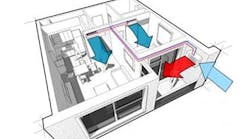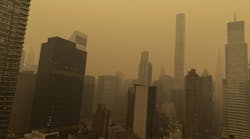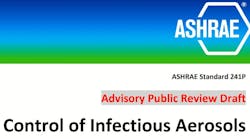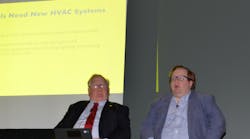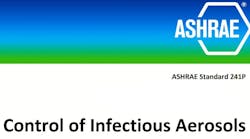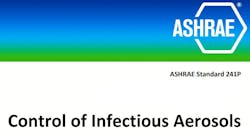In late 2022 near the end of the Covid public health emergency, the White House contacted ASHRAE (The American Society of Heating, Refrigerating and Air-Conditioning Engineers) seeking guidance as to how to better ventilate buildings to help prevent the airborne spread of infectious illness.
The Covid pandemic showed that those who owned or managed buildings – from offices to residences – were ill prepared. The way most buildings were ventilated fell far short in the opinion of many indoor air quality and health experts. And guidance on how to make indoor spaces safe from the spread of the virus was inconsistent.
Many buildings used unproven emerging technologies and strategies which were ineffective.
It was clear, a new standard on how to protect indoor spaces from the spread of infectious airborne illness was needed and the White House felt ASHRAE should be the guiding force behind this standard.
In December 2022, ASHRAE assembled a Special Project Committee under the leadership of Willaim Bahnfleth, a former ASHRAE president and a professor in theThe committee was made up of experts with backgrounds in the built environment. The committee was by invitation only. I was delighted to be part of the committee.
After many months and a lot of arduous work, in June, ASHRAE produced Standard 241, which establishes minimum requirements to reduce the risk of disease transmission by exposure to infectious aerosols in new buildings, existing buildings, and major renovations.
Infectious aerosols are tiny, exhaled particles that can carry disease-causing pathogens and are so small that they can remain in the air for extended periods of time and be inhaled.
Implementing this new standard would reduce exposure to SARS-COV-2 virus, which causes Covid 19, influenza viruses and other pathogens that cause major personal and economic damage every year.
The key elements of Standard 241 are:
- Guidance as to enhanced building measures to take, to reduce the spread of airborne illness.
- Establishing Equivalent Clean Air for infection rates where the space can use air cleaning instead of just increased outside air ventilation.
- Requirements as to the performance and safety of air cleaning devices.
- Requirements as to operations and maintenance of building systems to comply with the standard..
Standard 241 is a game changer for many indoor air quality businesses. Our active continuous technology is tested and proven effective at reducing bacteria and viruses and will add to the equivalent clean air rates in Standard 241 without the need for mechanical re-engineering. Also, by using less outside air the building will use less energy and reduce its carbon footprint.
Standard 241 is a major advance in making our building healthier. And as important, it’s created a new emphasis and urgency to improve ventilation so our country will be better prepared for the next pandemic. It’s a groundbreaker that will pay huge dividends in our future.

